Recent Storm Damage Posts
Prepping Your Team For Weather Emergencies | SERVPRO of West Milwaukee
9/18/2023 (Permalink)
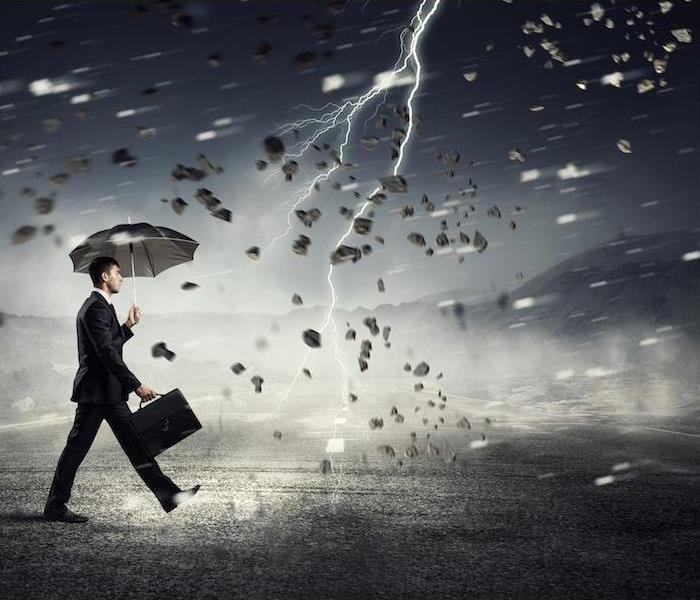 If your home or business was damaged in a storm, call SERVPRO of West Milwaukee to get you back in action.
If your home or business was damaged in a storm, call SERVPRO of West Milwaukee to get you back in action.
As a business or commercial property owner in Milwaukee, it is your job to have a plan in place for virtually every situation. While the majority of your plans probably revolve around day-to-day tasks or overcoming work-related obstacles, you also need to take the time to plan out your weather response.
Severe weather in Milwaukee can pop up at any time and if your employees are not prepared, it can turn into a chaotic situation quickly. Keeping your employees safe should be a top priority no matter the situation.
Don’t let your crew become vulnerable during a weather emergency! Follow these tips to help create a solid weather emergency plan that all your staff can follow.
<h3your-risk">Recognizing Your Risk
Weather threats look different during each season. Extreme cold and blizzard conditions can occur any time from the late fall to mid-spring, and the summer heat and humidity can produce severe storms and even tornadoes here.
We are also vulnerable to flooding, so understanding your flood risk can help you prepare ahead of time. Other methods, like staying current on the weekly forecast can help you make plans in advance and communicate them with your team.
<h3your-plan">Sharing Your Plan
If poor weather is in the forecast, don’t keep that information to yourself! Communicating with your team ensures that everyone is on the same page and you can all work together to figure out what needs to happen. Be sure to have everyone’s contact information in your phone or in your email.
This can help you easily fire off a group text or a mass email if quick action needs to be taken, like moving to your safe shelter location or explaining the evacuation routes.
<h3to-stay-in-or-get-out">Plan to Stay In or Get Out
Weather situations can warrant different responses based on what they are. If you have enough lead time, evacuating your team might be the best course of action. Be sure your employees understand where the emergency exits are and what the evacuation routes are on each level of your building.
In other circumstances, staying put might be the best choice for everyone’s safety. Pick a safe shelter location in an interior room in your building and prepare it now with food, water and emergency supplies. If a weather warning is issued, ensure everyone gets there quickly and stays there until the threat has passed.
Once you have all of these plans in place, it’s time to practice! Your team will react much more seamlessly and calmly during a true emergency if they know what to expect.
Don’t let extreme weather take control! If storms strike your business, SERVPRO® can help you restore your losses.
Getting Ready for the Summer Storm Season | SERVPRO of West Milwaukee
9/18/2023 (Permalink)
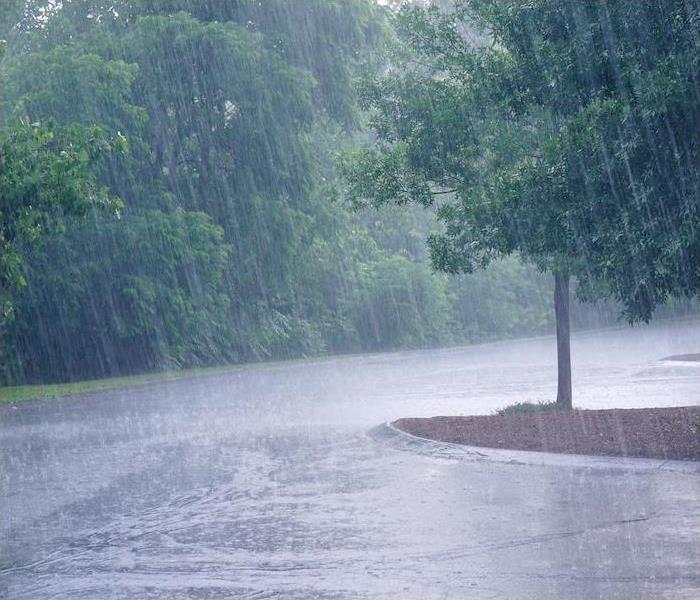 Have you been impacted by the unusual summer storm season? SERVPRO of West Milwaukee has your back when you experience flood and water damage.
Have you been impacted by the unusual summer storm season? SERVPRO of West Milwaukee has your back when you experience flood and water damage.
Wind, rain, floods, hail and tornadoes…surprise, it’s summer in Wisconsin! The list is long when it comes to potential weather threats to your Milwaukee home, and each threat can vary when it comes to severity.
Owning a home takes a lot of work. In addition to everyday maintenance and chores around your house, you also need to protect your home from seasonal weather threats.
At this point in the season, tornadoes and severe storms with wind and hail typically cause the most home damage. That is why you should start preparing your Milwaukee area home now for any incoming weather.
Starting with the outside of your home can help ensure your property and house are ready to weather the storm.
<h3task-list">Seasonal Task List
If you take care of your property and stay current on routine maintenance, we have good news for you! Many of these tasks also count toward protecting your home from storms.
Trimming your trees and removing dead branches from your property can help reduce the amount of projectiles tossed about in a high-wind event, and cleaning your gutters ensures that there is a space for the rainwater to collect and flow away from your home.
You should also take a look at your windows, doors and roof whenever you are outside. Gaps around window panes or rotten wood can easily invite water inside your house, and a missing or broken shingle can cause extensive damage to your roof and walls. Make any necessary repairs right away.
<h3upgrade-options">Home Upgrade Options
Preparations for storms may take a bit of time, but thankfully, many of these tasks can be done for free! If you do want to take your preparations to the next level, there are a few home upgrades that you can invest in.
Storm shutters are an easy upgrade to make that can be installed directly over your windows and can quickly be pulled shut when needed. If your property has trees that drop their leaves in the fall, invest in some gutter guards to help keep debris out.
If you have a detached garage or backyard shed, reinforcing the roof or adding gutters out there can help make sure everything inside stays safe and dry.
You can still do all of these preparations, but you might still suffer home damage anyway. Mother Nature is anything but predictable! Call SERVPRO® of West Milwaukee for immediate assistance.
Was your home damaged in a storm? Call us at SERVPRO of West Milwaukee to start restoration, 24⁄7.
The Steps to Follow After a Storm Passes Through | SERVPRO of West Milwaukee
9/18/2023 (Permalink)
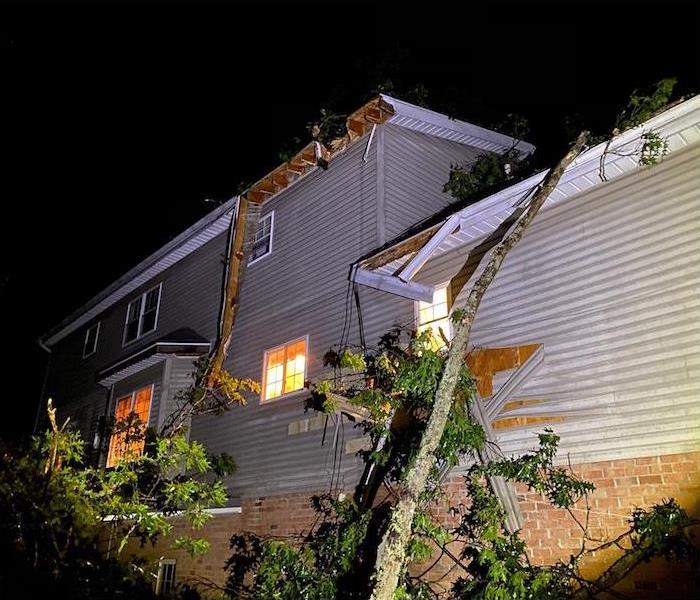 Water damage in your home? Not for long with SERVPRO of West Milwaukee on the case!
Water damage in your home? Not for long with SERVPRO of West Milwaukee on the case!
Destructive storms are just a part of the summer season here in the Milwaukee area. Thankfully, tornadoes don’t pop up as often as they do in the South, but strong winds, heavy rain and hail can all come together to create one forceful and dangerous situation.
Preparing your home and family before the storm hits is always ideal, but sometimes damage still occurs anyway if the conditions change rapidly or the storm becomes stronger than originally predicted.
Your top priority is always your family’s safety, so get inside and stay away from the windows until you are confident that the storm has passed. Use this blog as a guide to help walk you through the next steps after suffering any kind of storm damage.
<h3the-storm-passes">After the Storm Passes
No matter what kind of storm passes through, it is important to stay connected to the forecast and local authorities before, during and after a storm. Storms can come in waves, so be prepared with your weather radio and make sure your safe shelter location is easily accessible if you need to get back inside quickly again.
Connecting with friends and family can help set your mind at ease after a storm, and check in on your neighbors after you are confident that the storm has passed on for good. Even if your own home hasn’t suffered any damage, it doesn’t mean your neighbors are damage-free as well!
Call SERVPRO® of West Milwaukee, and start taking photos of any damage you see right away. We are locally owned and operated right in the Milwaukee area so we are experiencing the same storms you are, and we are preparing to respond to your call for help as soon as the forecast is issued.
<h3recovery-process">The Recovery Process
No home damage situation is exactly the same, so take care walking around your home as you investigate the extent of your situation. Loose nails, damaged boards and other hazards can cause serious injuries if you aren’t on the lookout! Wear sturdy boots and gloves if you need to walk through the damage or handle anything, and keep your cell phone on you in case of emergency.
One of the tasks we prioritize when we arrive at your home is securing the area with tarps and boards to prevent further damage. Feel free to do this on your own if it is still raining to protect your belongings while we are on our way to you.
We know that suffering storm damage can be overwhelming and scary, but we promise that our restoration team can handle any situation that you are faced with and we will take care of you. We will clean and restore your entire home, and we will even work alongside your insurance company to help you get the most out of your claim. Call us for a complete restoration day or night.
If a storm leaves your home damaged, contact us for fast recovery. We’re here 24⁄7 when you need us.
Keeping Your Home Safe in Strong Winds | SERVPRO of West Milwaukee
6/5/2023 (Permalink)
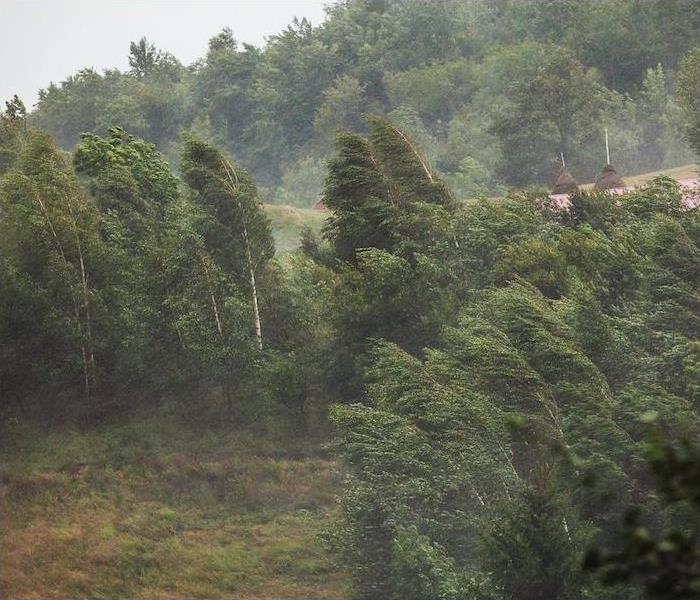 If you've suffered from storm-related damage to your home or business, make SERVPRO of West Milwaukee your first call.
If you've suffered from storm-related damage to your home or business, make SERVPRO of West Milwaukee your first call.
The wind is an ever-present weather phenomenon that we can experience in a variety of ways. A soft breeze on a summer day can feel idyllic, while a strong gusty wind during a thunderstorm can have you running for the safety of your home.
When the wind starts to pick up, it can cause a great deal of damage in a short amount of time. Most damaging wind is associated with thunderstorms, but it can happen on a sunny day as well.
By learning more about the different kinds of strong winds and the damage they cause, you can take steps to protect your home now so you are prepared for any weather.
<h3wind-types-in-wisconsin">Common Wind Types in Wisconsin
Over half of all reported damaging wind is caused by thunderstorms, and even more when a tornado is present. You should always follow weather warnings and head indoors as soon as a storm rolls into town.
Thunderstorms can produce some strong winds in addition to other threats, like rain and hail. It can easily reach up to 60 miles per hour, which is fast enough to throw debris around your yard.
Straight-line winds are also often caused by thunderstorms. These wide-reaching winds can gust up to 100 miles per hour and can damage parts of town that don’t even see rain. They can cause widespread damage because there isn’t any rotation in them and can occur in single powerful bursts.
Tornadoes are also a common weather threat, and they carry a wider variety of wind patterns. Wind produced in a tornado can be straight-line winds, downdrafts, and micro- or macro-bursts.
Tornadoes don’t often touch down in Milwaukee County, but that doesn’t mean we don’t experience wind damage. Even just a few weeks ago we experienced a storm with wind that reached over 75 miles per hour!
<h3to-prevent-wind-damage">Tips to Prevent Wind Damage
Wind can easily topple trees and make your lawn furniture take flight, and it can even upend mobile homes and cars if it blows fast enough.
In order to stay safe from the wind, you need to know what the different weather alerts mean and act accordingly. You need to secure loose objects like trash cans and porch chairs, and consider moving your car into the garage before the storm arrives.
Clean up yard debris and remove fallen branches off of your property. If the wind picks up a branch, it can easily become a projectile that can cause a lot of damage to your home and windows.
Once your home is ready for the wind, get your family inside to an interior room to wait out the weather. Don’t go back outside until you are confident that the threat has passed.
Take a walk around your home and your property to look for damage after the storm is gone. You should address any damage right away, even if it is just a single missing shingle. SERVPRO of West Milwaukee can help you recover right away!
Has your home been damaged by wind? Call us and get things cleaned up fast.
The Types of Floods You Might Encounter | SERVPRO® of West Milwaukee
4/9/2022 (Permalink)
 Regardless of the cause of the flooding, SERVPRO of West Milwaukee has the team to help you recover from any disastrous event.
Regardless of the cause of the flooding, SERVPRO of West Milwaukee has the team to help you recover from any disastrous event.
In the United States, flooding is the most common natural disaster, claiming more lives each year than hurricanes, tornadoes, and lightning combined. Individual homes with excess water can be affected, as can entire communities or even entire cities.
Flooding affects all 50 states and every U.S territory, but there are similarities in types and causality among all them. There are three common types of flooding, and they happen for four typical reasons.
<h4types-of-natural-flooding">3 Types of Natural Flooding
Flash floods are common, and they happen when heavy rain passes or sits over an area and overwhelms the ability of the ground to contain the moisture. Excess water runs off and takes garbage cans, cars and more with it.
River floods are exactly what they sound like. When there’s too much water for a river’s banks to hold, the water spills over the sides and causes destruction.
Coastal floods happen in areas next to large bodies of water, when storm surges or cyclonic activity causes ocean or gulf levels to rise to flood levels.
<h44-most-common-causes-of-natural-flooding">The 4 Most Common Causes of Natural Flooding
Heavy rainfall. Storms with excessive rainfall, or storms that sit and rest over an area for an extended period can cause flash floods or river flooding. Urban areas are more at risk for rain floods, because the higher percentage of concrete and asphalt means there’s a lack of soil to soak up all that water. In August of 2021, the Milwaukee area saw flooding like it hadn’t seen since 2008. In just two days, some areas saw as much as seven inches of rainfall, which lead to significant flash floods across the city. The total rainfall at Mitchell Airport on Sunday, August 2 was 4.79 inches, which broke the previous record of 2.79 inches significantly.
Oceanic activity. Storm surges, hurricanes and rising tides can cause water levels to rise in waves, which can invade coastal communities and wreak havoc.
Dams and levees failing. The most notable example of this in recent history would be the disastrous levee breaks during 2005’s Hurricane Katrina. Levees and dams fail when cracks occur or excess pressure overtakes the dam’s ability to contain the surge of water behind it.
Snowmelts and ice dams. In areas of the country where heavy snow and prolonged freezing temperatures are common, snow and ice can build up over a winter’s time, and when they start to melt, they cause rivers of water to flow through area communities. Ice dams or ice jams happen when rivers become blocked by built-up ice being carried downstream, causing the banks to overflow.
Regardless of the cause of the flooding, SERVPRO has the tools and teams to help your home or business recover from its disastrous effects. Contact us anytime when flooding or water damage makes a mess in your life.
Examining U.S. Spring Weather Threats | SERVPRO® of West Milwaukee
3/12/2022 (Permalink)
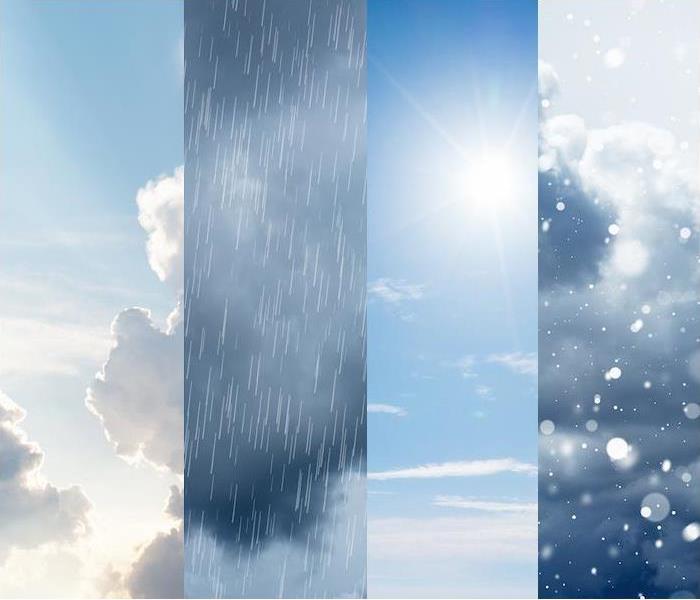 Extreme temperature changes can lead to the possibility of severe weather. SERVPRO of West Milwaukee is a click away if you experience any damage.
Extreme temperature changes can lead to the possibility of severe weather. SERVPRO of West Milwaukee is a click away if you experience any damage.
As one of the world’s largest countries, the United States experiences a variety of seasonal weather patterns, resulting in a wide variety of seasonal weather threats.
We will examine the many weather patterns that might develop as spring approaches and warm and cold air masses mix throughout the country, as well as what we can anticipate in Missouri.
The Pacific Northwest is prone to severe rain in the spring, which may result in flooding and water damage. At higher elevations, snow will continue to accumulate, and its melting and runoff will create their own set of issues.
Winters in the Upper Midwest and Northeast, including Wisconsin, are exceptionally severe compared to the rest of the country, with freezing temperatures persisting throughout the season. Residents from Maine to the Dakotas should expect very cold weather even into the spring season, as well as the possibility of snow and freezing conditions.
Severe thunderstorms are a threat to the state, particularly during the spring and summer months. Strong derechos can blast at upwards of 120 mph, resulting in power outages and tens of millions of dollars in damages. Tornadoes are not as common in Wisconsin as in other midwestern states, but they do occasionally occur.
The Southwest will need to be watchful for severe heat waves that pose a danger to life and property. The South Pacific region, which includes Hawaii, will be on the lookout for tsunamis triggered by tectonic activity.
Windstorms, derechos and the potential of wildfires, which spread quickly in high winds and dry seasons, will be an issue for the central United States, which stretches from Iowa to Texas. Tornado Alley is an area within this region that is prone to strong storms and tornadoes.
The Southeast may see a variety of severe weather events, ranging from tornadoes and severe thunderstorms in landlocked areas to hazardous rip currents and hurricanes later in the season.
All 50 states face a substantial danger from extreme weather. Regardless of the difference in danger between you and a relative in another state, being prepared is always a good idea.
If extreme weather leaves you with damage from water, fire or other elements, help is a click away. Contact SERVPRO for fast, expert recovery.
Winter Storms Are Coming—Are You Ready? | SERVPRO® of West Milwaukee
1/9/2022 (Permalink)
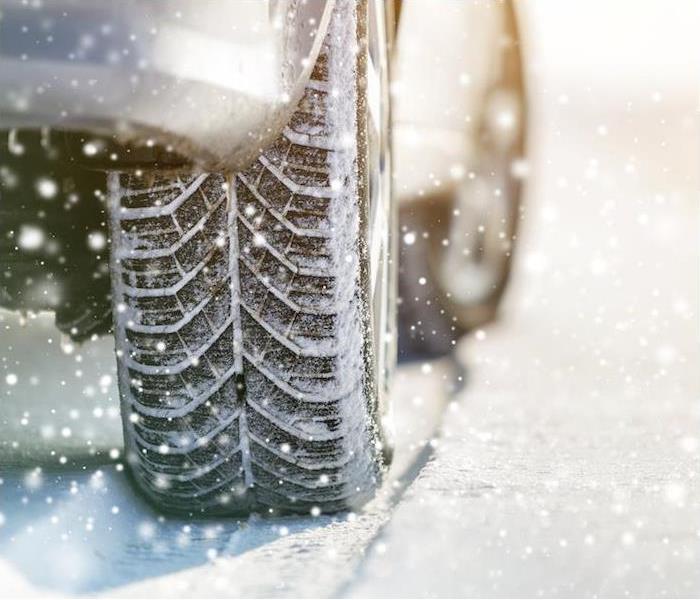 If winter weather should bring damage to your home or business, contact SERVPRO of West Milwaukee for fast, restorative solutions.
If winter weather should bring damage to your home or business, contact SERVPRO of West Milwaukee for fast, restorative solutions.
Lake Michigan winters are a different level of winter, and they require preparation. A wait-and-see attitude toward winter in Milwaukee will have you up to your neck in snow with no power and no heat.
Winter’s risks should never be minimized or overlooked, so whether you’re a Milwaukee lifer or new to the area, it’s a good idea to go over some of the necessary preparations as we head into the bitter cold of the cold season.
Protect Your FamilyWhen Jack Frost is nipping at…well, everything, you’ll be glad you created an emergency action plan to keep your family safe and connected during winter storms. In case of evacuation they’ll know what to do, where to meet and how to stay in touch.
Get your family vehicles ready for winter, too. Check batteries to make sure they’ll last and crank through the tough winter cold, top off all your fluids, and make sure your tires and brakes are in good shape.
Check the status of your home and car emergency kits as well, ensuring you have the water, medicine and supplies you would need to survive and outage, evacuation or otherwise-stuck situation.
Protect Your HomeFrozen pipes are the bane of every cold-weather homeowner’s existence, so keeping them insulated and keeping water flowing freely has got to be a priority when the thermometer is at chilling levels.
Speaking of insulation, make sure your attic is adequately insulated and your windows are sealed, so that warm air isn’t escaping and cold air isn’t intruding.
Check your heat sources—if you use a gas or electric HVAC system, let a pro do any necessary maintenance or repairs before winter pushes your unit to its limit and threatens to overwhelm it. If you use wood, clean out your chimney or furnace to ensure safe use through the winter, and stock up on some extra wood in case you get shut inside.
Protect Your PetsWith rare exception, dogs and cats aren’t meant for the kind of cold we experience here. Bring your pets inside to enjoy the comforts of home during the winter.
If you do have cold weather breeds or livestock, make sure they always have non-frozen water available, as well as somewhere to take shelter.
Watch for Melts and FloodingDangerous floods and ice dams are a real threat after winter storms and precipitation, so keep an eye on your roof for any potential damage from ice dams, and keep your notifications turned on from a trusted weather source for updates about potential thaw flooding.
If winter weather should bring damage or flooding to your home or business, contact SERVPRO for fast, restorative solutions.
Summer Storm Planning | SERVPRO® of West Milwaukee
8/25/2021 (Permalink)
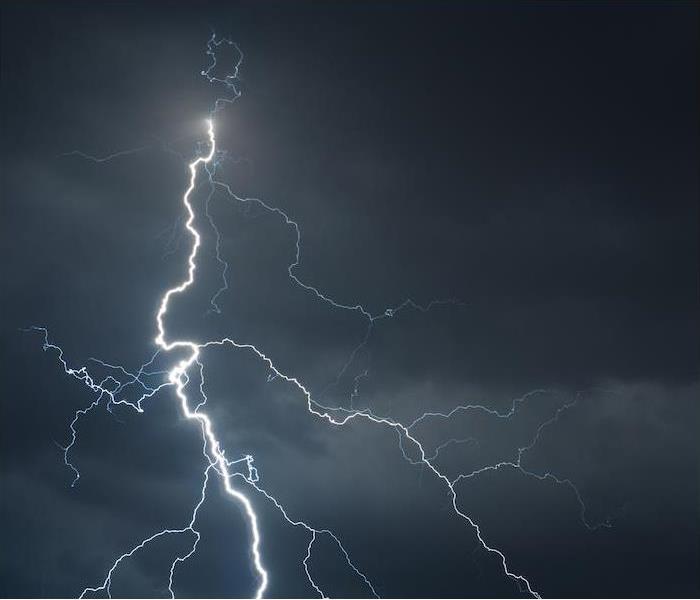 If storms cause damage to your home or business, SERVPRO of West Milwaukee is on the line, ready to make things right.
If storms cause damage to your home or business, SERVPRO of West Milwaukee is on the line, ready to make things right.
Summer calendars are full of fun activities. Long days full of sun make us year for outdoor activity—maybe you’re heading to the park to watch the Brew Crew, or maybe you’re taking the kids to splash around at a local pool or splash pad.
Whatever your plans are, though, don’t forget to bring an umbrella along.
It seems counterintuitive, but summer months are also a highly active time for thunderstorms. The highest month of rainfall in Milwaukee is June, and all of summer is above average in rainfall. Additionally, the warmth of summer combines with moisture from Lake Michigan to produce a higher likelihood that those extra inches of rain will come via storms.
Be Storm-Alert
Storms can pop up seemingly out of nowhere in summer. Pay close attention to notifications from weather apps or local weatherpeople. An NOAA Weather radio can always keep you updated as well, with the added bonus of being able to continue alerting you if power is knocked out.
If a flood watch is put into effect, you should postpone outdoor activities or think twice about travel plans. Take a look around at home as well—you might need to tie down or move some things to they don’t get blown or washed away in a heavy storm.
Preparing for a storm doesn’t quite excite the heart like watching Christian Yelich hit dingers, but it’s a difference-maker when it comes to safety. Storms cause an unfortunate number of deaths every year, and most of them could have been prevented.
Be Storm-Safe
Being outdoors during a storm is asking for trouble. Keep yourself inside from time thunder starts until it has stopped for at least 30 minutes to stay out of lightning’s strike range.
Lightning can electrify tubs and showers if it strikes the home, so bathe later when it’s dry. Lightning can also shatter windows, so sit or stand away from them during the storm.
Ensure that your emergency kit is stocked and ready, with anything you may need for up to three days without power. And a kit in the car can be a vital help if evacuation becomes necessary in extreme situations.
If it does flood, stay inside or get to high ground. Coming in contact with flood water can carry you or your car away, conceal roads that are damaged and unsafe or even make you sick.
There are any number of dangers that can come into play in a thunderstorm, and it’s always best to be cautious and put things on hold until storms safely pass. If storms cause damage to your home or business, SERVPRO is on the line, ready to make things right again.
Storms Are More Active and More Costly | SERVPRO® of West Milwaukee
8/5/2021 (Permalink)
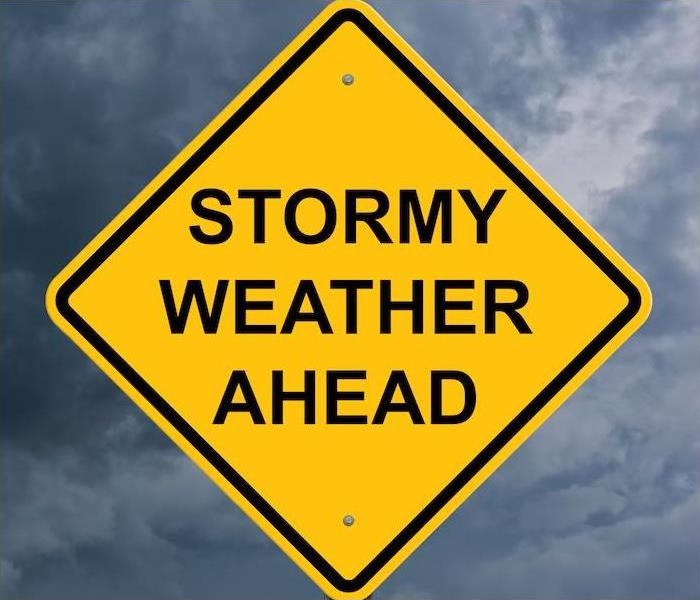 When storms do damage, we go to work to make things right. Contact SERVPRO of West Milwaukee to start the restoration process.
When storms do damage, we go to work to make things right. Contact SERVPRO of West Milwaukee to start the restoration process.
2020 was an incredibly disturbing year for everyone, and a devastating year for far too many. Multitudes of us were stricken by the COVID-19 virus in one way or another, and almost everyone suffered the mental taxation of an extended quarantine period.
And not to be outdone by producing the worst scourge in a hundred years, the year also became a historic one as it pertained to disastrous weather. In fact, 2020 saw more weather disasters than any previous year on record.
A storm or weather event that causes over a billion dollars in damage is officially classified as a weather disaster. Last year, the U.S. was afflicted by 22 of these events, as well as a troupe of others that (thankfully) didn’t quite make that kind of financial impact.
The Atlantic hurricane season was so productive, in fact, that the NOAA ran out of names, and for just the second time in history had to resort to using Greek letters to name storms.
Not Just Hurricanes
Hurricanes are often assumed to be the storm types that cause the most financial turmoil, but the most expensive disasters of 2020 in the contiguous United States were actually thunderstorms and tornadoes. Fourteen of the storms classified as disasters were storms of some type.
Here’s an extreme example of the damage possible because of a single system: A line of storms in Nebraska last August that would typically be no big worry banded together and churned into a razor-like storm called a derecho. The massive storm sliced through over 100 million acres of corn fields—that’s more than 150,000 square miles—compromising over 11% of the entire country’s corn production in one fell swoop.
Around here, we saw the edges of that derecho reach all the way up to the Great Lakes, and we had our share of other storms throughout the year, including record-setting snowfalls and flooding caused by heavy rains in August and November.
Not Just 2020
While we definitely hope 2021 and following years will be milder, we do seem to be on an upward trend of storm activity and intensity. Each year of the last 10 has endured at least eight billion-dollar disasters, and two of those years set the previous records for activity with 16 storms each. 2017 set a benchmark for damages caused, with over $300 billion in reconstruction expenses.
Precautions against storm and water damage are the responsibility of every property owner. But when extreme weather comes, sometimes those preparations are unable to withstand the fury of Mother Nature.
When storms do damage, we go to work to make things right. Contact SERVPRO today to see how we can help.
 If your home or business was damaged in a storm, call SERVPRO of West Milwaukee to get you back in action.
If your home or business was damaged in a storm, call SERVPRO of West Milwaukee to get you back in action.

 24/7 Emergency Service
24/7 Emergency Service







